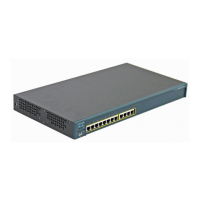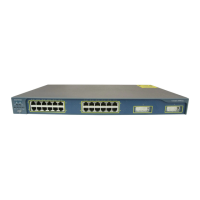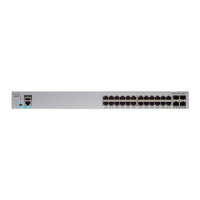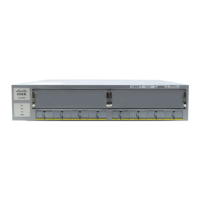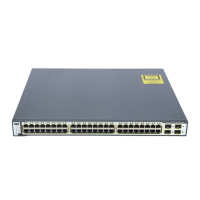CHAPTER
36-1
Catalyst 4500 Series, Catalyst 2948G, Catalyst 2948G-GE-TX, and Catalyst 2980G Switches Software Configuration Guide—Release 8.2GLX
78-15908-01
36
Configuring Switch Acceleration
This chapter describes how to configure switch acceleration on the Catalyst enterprise LAN switches.
This chapter consists of these sections:
• Understanding How Switch Acceleration Works, page 36-1
• Configuring Switch Acceleration on the Switch, page 36-3
• Backplane Channel Module, page 36-4
Note For complete syntax and usage information for the commands that are used in this chapter, refer to the
Catalyst 4500 Series, Catalyst 2948G, Catalyst 2948G-GE-TX, and Catalyst 2980G Switches Command
Reference.
Understanding How Switch Acceleration Works
The switch acceleration feature provides the following supervisor engine performance benefits:
• Increased bandwidth between switch engines
• Full-mesh connectivity between switch engines
• Reduced internal traffic congestion
Switch acceleration, which is supported on Catalyst 4006 switches with Supervisor Engine II and on the
Catalyst 4000 family Backplane Channel Module, reduces internal traffic congestion by creating a
full-mesh connection between the switch engines (SEs).
Supervisor Engine II has three switch engines that switch traffic to and from the modules and the uplink
ports as follows:
Note This publication refers to Switch Engine 1 as SE1, Switch Engine 2 as SE2, and Switch Engine 3 as SE3.
• SE1 handles traffic for Gigabit Ethernet uplink port 1/1 and traffic between modules that are
installed in the chassis.
• SE3 handles traffic for Gigabit Ethernet uplink port 1/2 and traffic between modules that are
installed in the chassis.
• SE2 switches internal traffic and forwards traffic that is bound for the uplink ports to the correct SE
for that port.

